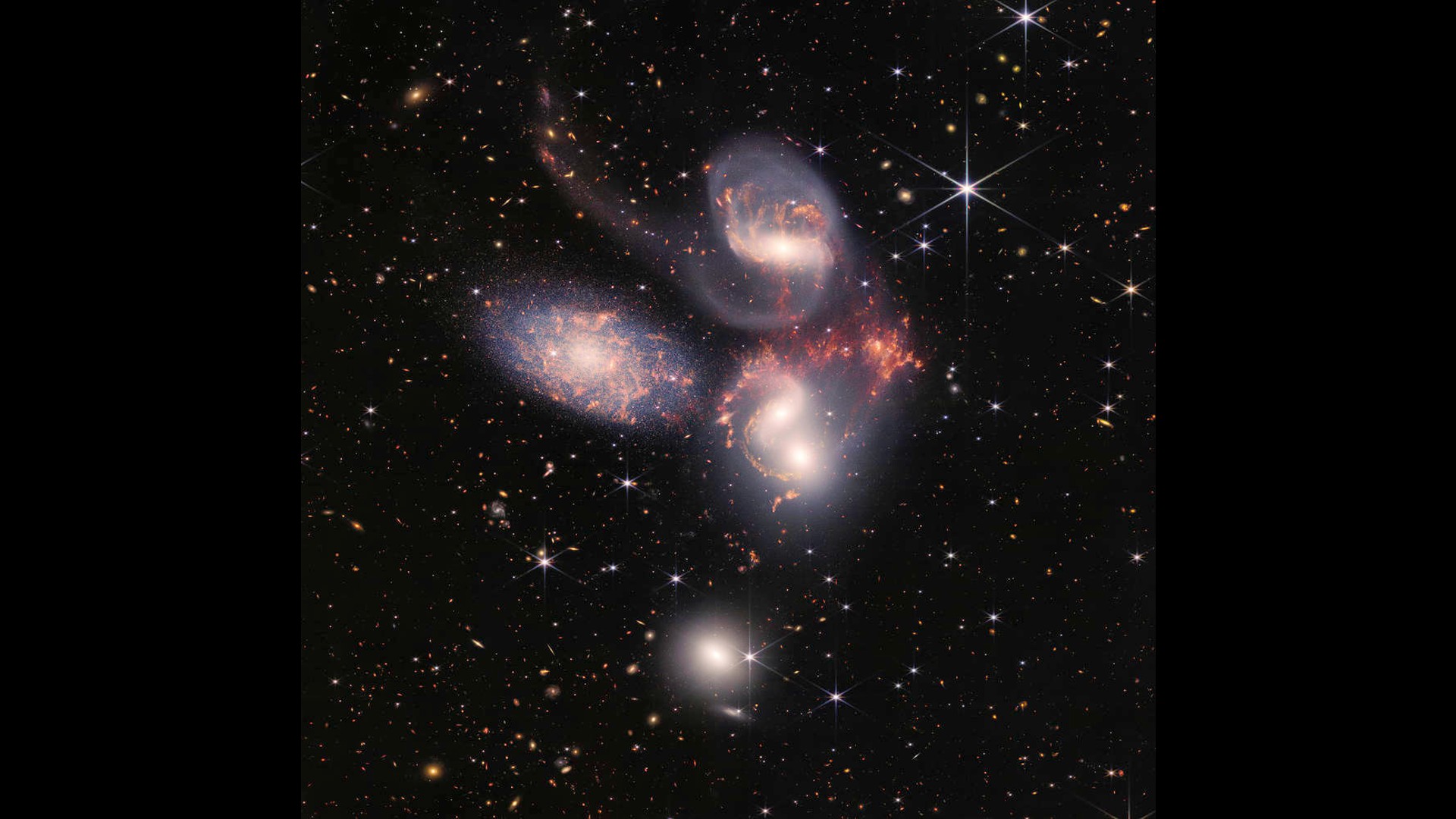Strange molecules swirl around supermassive black holes, James Webb Space Telescope finds

NASA's iconic new observatory has spotted surprising compounds around supermassive black holes.
The James Webb Space Telescope (JWST) has detected carbon-bearing molecules called polycyclic aromatic hydrocarbons (PAHs) in the centers of three active galaxies, where scientists had expected these molecules couldn't survive. Intriguingly, the observations also suggest that the radiation in the vicinity of the supermassive black holes in these galaxies has altered the overall properties of the PAHs, which could complicate a key technique astronomers use to evaluate star formation, and could also affect their usefulness as biological building blocks.
Ismael García-Bernete, an astrophysicist at Oxford University in the U.K., led a group of astronomers who have analyzed observations of three active galaxies gathered by JWST's Mid-Infrared Instrument (MIRI). The three galaxies are NGC 6552, which is 370 million light-years away from Earth in the constellation Draco; NGC 7319, that is one of the five galaxies in the famous Stephan's Quintet some 311 million light-years away in Pegasus; and NGC 7469, which is also in Pegasus at a distance of about 200 million light-years.
Gallery: James Webb Space Telescope's 1st photos
PAHs are molecules characterized by rings of carbon atoms. These molecules are very common in the universe, found everywhere from distant galaxies to comets in our own solar system. Their ubiquity is what makes them useful potential building blocks for life, but it also makes them important tracers for star-formation. PAHs emit strongly at infrared wavelengths detectable by MIRI when they are illuminated by the ultraviolet radiation in starlight, so usually, where astronomers detect PAHs this way they can be sure there are hot, young stars nearby.
García-Bernete's aim was to determine whether PAH emission in the dense, ultraviolet-rich environment at the center of an active galaxy was the same as PAH emissions in calmer star-forming regions in the spiral arms of galaxies. While stars can form in the cores of active galaxies, the process of gas falling onto a supermassive black hole can also release torrents of ultraviolet light that cause the PAHs to glow.
Previous models had predicted that the harsh radiation around the supermassive black hole at the core of an active galaxy would actually destroy all PAH molecules. Instead, MIRI discovered that PAHs were plentiful in the central regions of all three galaxies studied. However, the observations showed that the emission was coming from larger and electrically neutral PAH molecules, indicating that radiation had indeed eradicated smaller, electrically charged PAHs. The larger PAH molecules may have survived because they were protected by dense, enveloping clouds of molecular gas, the team speculated.
Get the Space.com Newsletter
Breaking space news, the latest updates on rocket launches, skywatching events and more!
The loss of the smaller, electrically charged PAHs is a problem for astronomers using these compounds to trace star formation, because star-forming regions are typically richer in electrically charged PAHs. But if these are destroyed in the cores of active galaxies, astronomers cannot track where stars might be forming.
"The next step is to analyze a larger sample of active galaxies with different properties," García-Bernete said in a statement. "This will enable us to better understand how PAH molecules survive and which are their specific properties in the nuclear region [of galaxies]. Such knowledge is key to using PAHs as an accurate tool for characterizing the amount of star formation in galaxies, and how galaxies evolve over time."
The research was published Sept. 30 in the journal Astronomy and Astrophysics.
Follow Keith Cooper on Twitter @21stCenturySETI. Follow us on Twitter @Spacedotcom and on Facebook.
Join our Space Forums to keep talking space on the latest missions, night sky and more! And if you have a news tip, correction or comment, let us know at: community@space.com.

Keith Cooper is a freelance science journalist and editor in the United Kingdom, and has a degree in physics and astrophysics from the University of Manchester. He's the author of "The Contact Paradox: Challenging Our Assumptions in the Search for Extraterrestrial Intelligence" (Bloomsbury Sigma, 2020) and has written articles on astronomy, space, physics and astrobiology for a multitude of magazines and websites.









